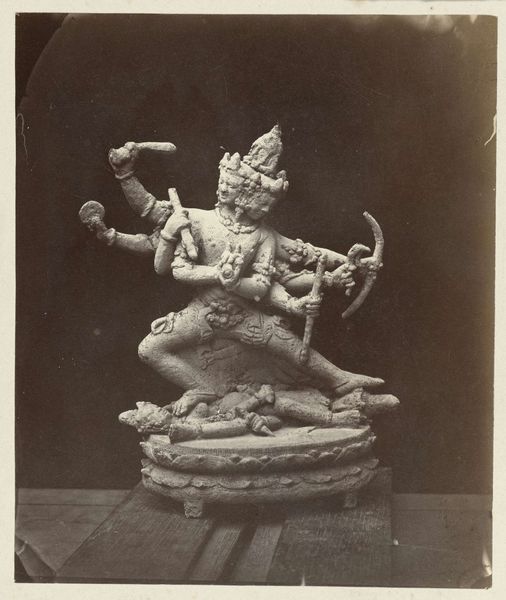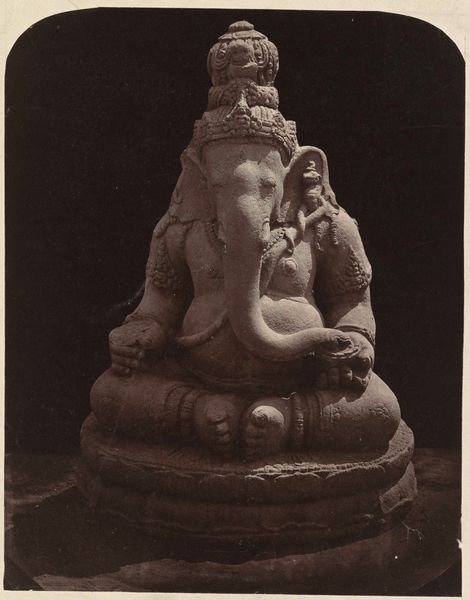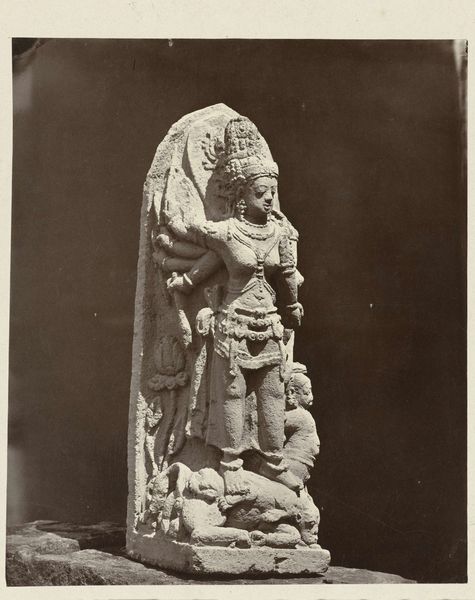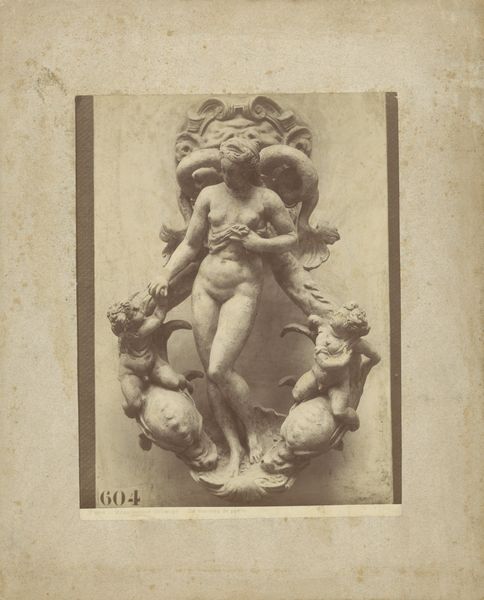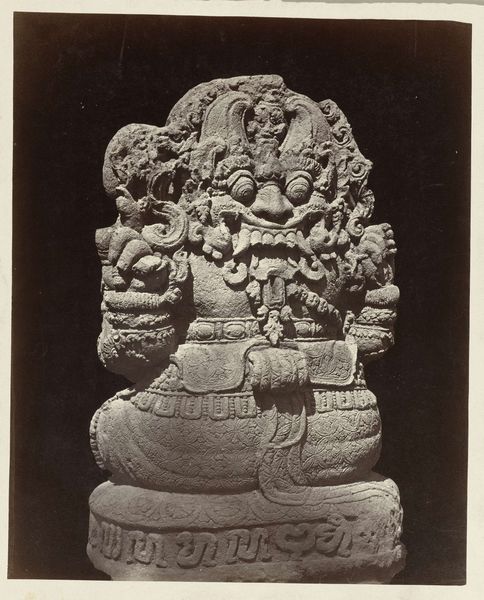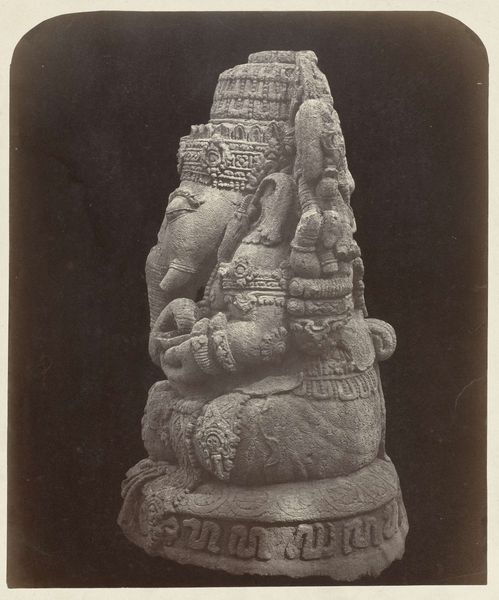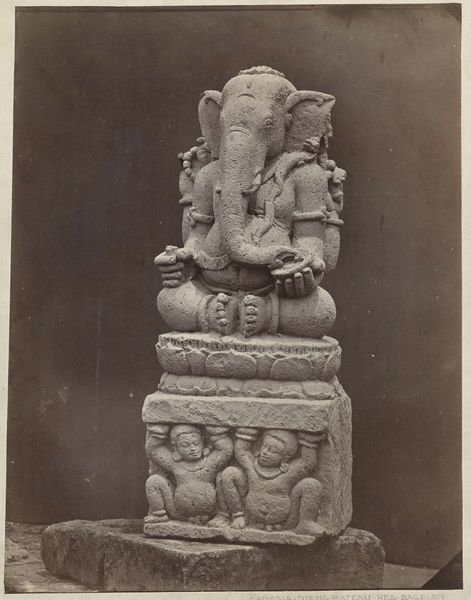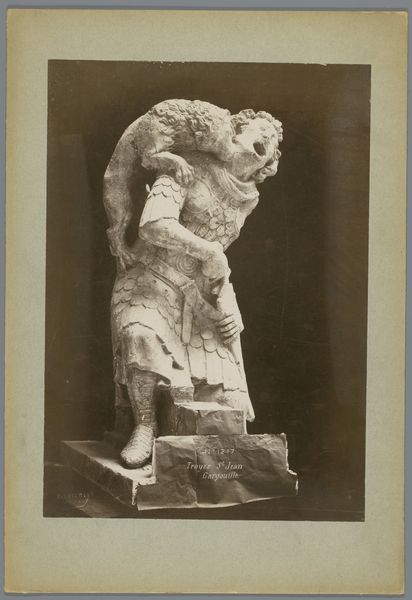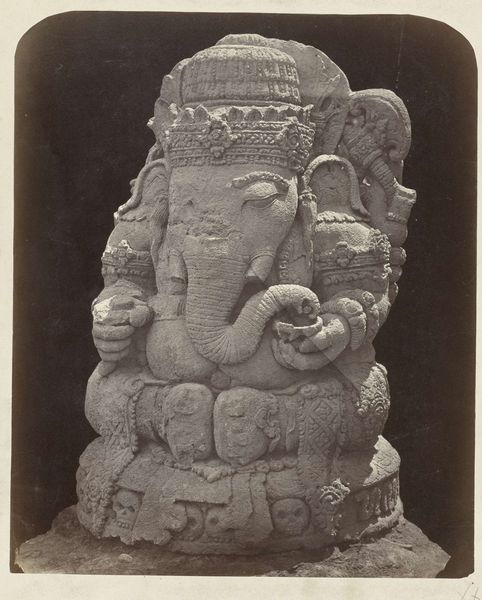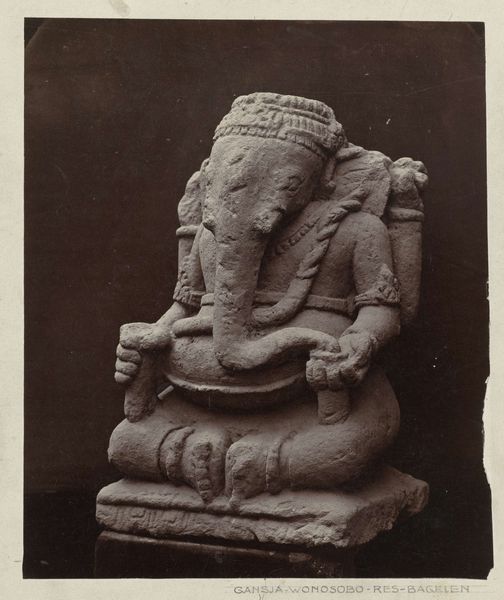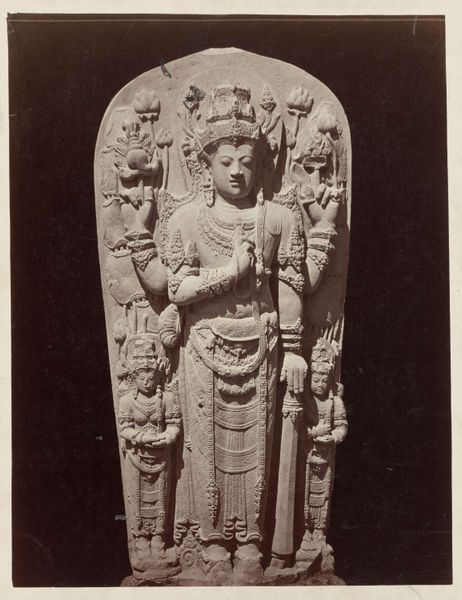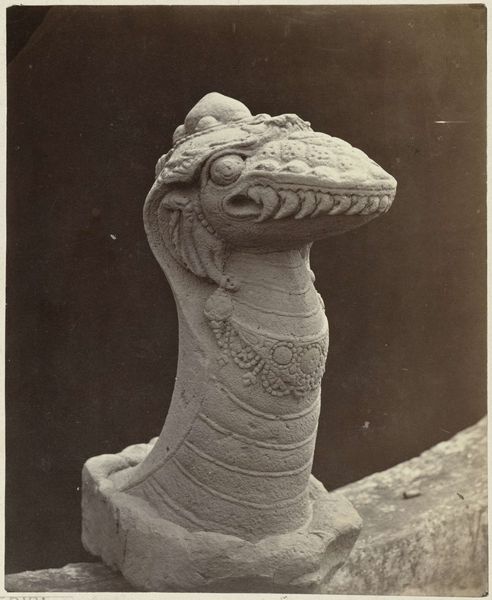
Djokjokarta (Klaring) (r. Djokjokarta) Eight-armed bronze Trailokyavijaya dashing a corpse (Former Klaring collection). Yogyakarta, Yogyakarta district, D.I. Yogyakarta province, 9th-10th century. Possibly 1865 - 1867
0:00
0:00
print, bronze, photography, sculpture
#
portrait
#
16_19th-century
# print
#
sculpture
#
asian-art
#
bronze
#
figuration
#
photography
#
sculpture
#
19th century
#
islamic-art
#
statue
Dimensions: height 210 mm, width 170 mm
Copyright: Rijks Museum: Open Domain
Curator: Look at the commanding presence of this work. Isidore Kinsbergen captured "Djokjokarta (Klaring) (r. Djokjokarta) Eight-armed bronze Trailokyavijaya dashing a corpse," likely between 1865 and 1867. What strikes you first about it? Editor: The sheer physicality. I’m immediately drawn to the textures and the way light plays on the bronze. You can almost feel the weight of the material. Curator: The materiality speaks volumes. This bronze sculpture, dating back to 9th-10th century Yogyakarta, becomes accessible to a new audience via Kinsbergen's photograph, a cultural and technological shift shaping the artwork’s reception. The photo allows us to witness the artistry beyond its immediate locale. Editor: Precisely! And it's not just about witnessing, but about participating in the consumption and understanding of the artwork through the photograph itself. We see a powerful, multi-limbed figure, Trailokyavijaya, trampling a corpse – potent symbolism captured via a chemical process that’s also a commercial product. Curator: This image reveals a great deal about the institutional framing of Asian art within the colonial context. Kinsbergen, working in Java, was undoubtedly influenced by the prevalent European views. He created this image both for documentation, to catalog this Javanese cultural object, and likely for distribution. Editor: Exactly. Look at the setting - the dark backdrop isolates the figure. Kinsbergen’s process renders this complex deity into a studio object and highlights how the gallery setting would significantly alter one’s engagement. Curator: It’s fascinating to consider the choices involved: the angle, the lighting, the very act of isolating the sculpture. These factors actively shape how the Western gaze interprets it. Was this a straightforward portrayal, or were colonial ideas about the ‘exotic’ subtly baked in? Editor: I find myself considering the labor involved – not just the artistry of the original bronze casting, but also Kinsbergen’s labor, the work of producing prints and distributing them, creating a market and visual language around the “oriental” artifact. Curator: Understanding how institutions presented art shapes how people perceived cultures outside their own. This photo participates in those dialogues and creates entirely new contexts that outlive the depicted work of art. Editor: Indeed, seeing this image is really about untangling layers of material, process, social, and institutional relationships—illuminating power dynamics that influence the production, consumption, and enduring legacy of a cultural artifact.
Comments
No comments
Be the first to comment and join the conversation on the ultimate creative platform.
